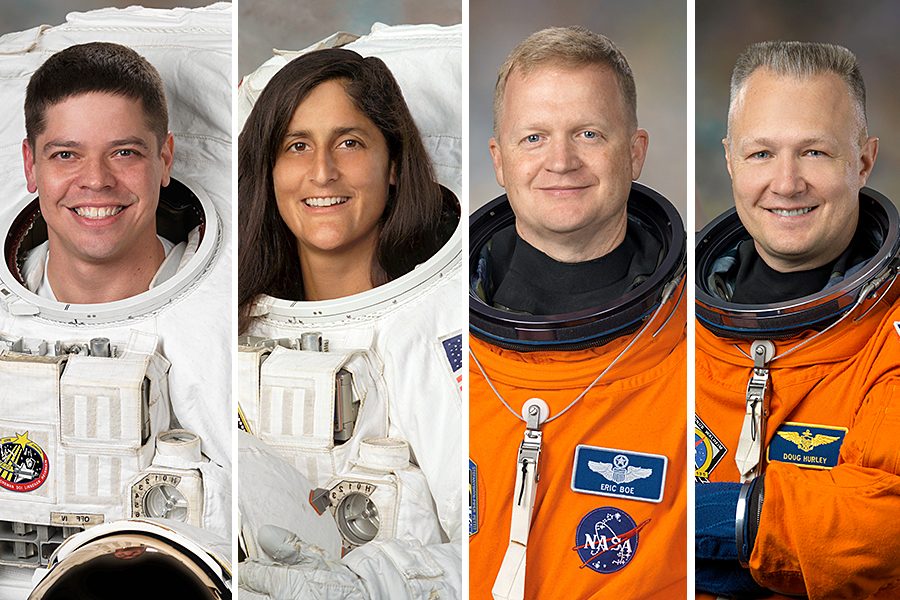Air Force pilots, Navy officer, and Marine: Meet NASA's first commercial astronauts
Loading...
NASA administrator Charles Bolden announced Thursday that the first four daring men and women to fly into space on a commercial rocket have been selected.
“These distinguished, veteran astronauts are blazing a new trail, a trail that will one day land them in the history books and Americans on the surface of Mars,” wrote Mr. Bolden, NASA’s administrator and retired Marine Corps Major General.
Here are the four Americans that will make history, flying in the first Commercial Crew vehicles:
Robert Behnken
A graduate of Washington University, and native of St. Ann, Missouri, Mr. Behnken was a Colonel in the US Air Force. Behnken has logged more than 708 hours in space, including six spacewalks.
Sunita Williams
Ms. Williams graduated from the US Naval Academy. She was sent to the Mediterranean and Persian Gulf during her time in the military, in support of Desert Shield and Operation Provide Comfort. In her career thus far, she has spent 322 days in space on two missions.
Eric Boe
Mr. Boe came from the US Air Force Academy, and while serving the military he flew 55 combat missions over Iraq in support of Operation Southern Watch. Boe has served as a pilot for both a crew launch vehicle, and a crew exploration vehicle in space.
Douglas Hurley
Mr. Hurley was a Marine Corps officer, where he served for over 24 years. He’s currently the Assistant Director of New Programs, for the Flight Crew Operations Directorate (FCOD) at Johnson Space Center.
The department is wasting no time in getting the astronauts launch-ready. “As it stands, we’re currently working toward launching in 2017, and today’s announcement allows our astronauts to begin training for these flights starting now,” said Bolden.
The goal currently is to have Americans on Mars by the 2030s, through American-run programs.
Bolden points to economic benefits for the commercialization of the American space program.
"We have over 350 American companies working across 36 states on our commercial crew initiative ... Our plans to return launches to American soil also make fiscal sense," the NASA administrator said. "It currently costs $76 million per astronaut to fly on a Russian spacecraft. On an American-owned spacecraft, the average cost will be $58 million per astronaut.”
Over 6,300 applicants applied to be part of the most recent class of NASA astronauts – the Class of 2013; eight were selected. “The enthusiasm for NASA’s astronaut program reminds us that journeying to space continues to be the dream of Americans everywhere,” said Bolden.








